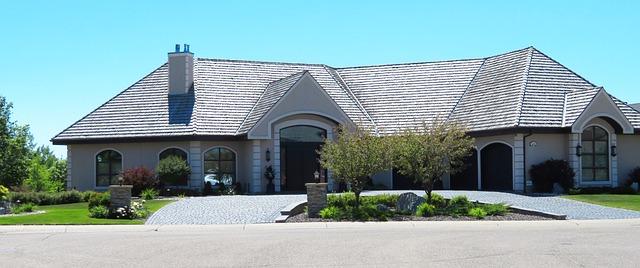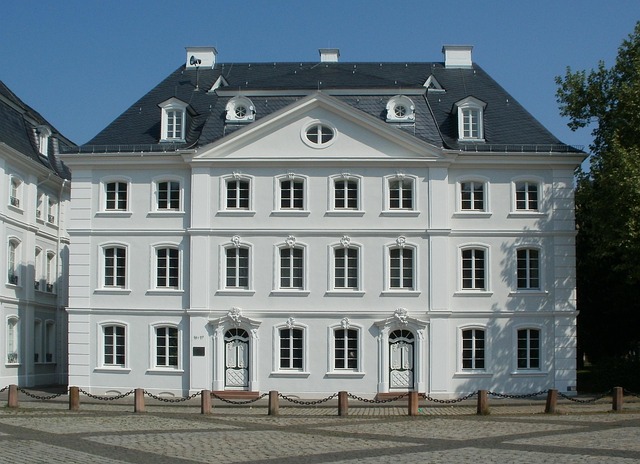Executive Condominiums (ECs) in Serangoon, Singapore, offer a premium housing solution for professionals and families, combining spacious living with community advantages. With strict eligibility requirements, these modern apartments feature larger floor plans…….
Category: Executive Condominium Ec
Executive Condominiums (EC) – A Comprehensive Overview
Introduction
Executive Condominiums (ECs) in Singapore serve as a pivotal segment of the country’s housing market, offering a unique blend of public and private housing benefits. This article delves into the multifaceted world of ECs, exploring their significance, global impact, economic considerations, technological advancements, policy frameworks, challenges, and future prospects. By the end of this comprehensive guide, readers will have a profound understanding of what executive condominiums are, how they operate within the broader housing landscape, and their implications on both local and international scales.
Understanding Executive Condominiums (EC)
Executive Condominiums (ECs) in Singapore are a hybrid form of public and private housing designed for the sandwiched class – middle-income earners who find HDB flats too basic and private condos too expensive. Introduced in 1995, ECs cater to couples looking for larger living spaces with facilities comparable to those found in private condominiums. Over the years, ECs have evolved, becoming a key component of Singapore’s housing policy, reflecting the nation’s commitment to accommodating the changing needs of its population.
Global Impact and Trends
The concept of Executive Condominiums has garnered international attention as a housing solution that balances affordability with quality living. Countries facing similar socio-economic challenges have shown interest in adopting or adapting the EC model to suit their local contexts. Key trends influencing the trajectory of ECs globally include urbanization, demographic shifts, and the push for sustainable housing solutions. The impact varies across regions, with some adopting a more stringent approach to public housing while others embrace a mix-development strategy.
Economic Considerations
ECs play a crucial role in Singapore’s economy by providing an avenue for investment and diversification within the real estate sector. The market dynamics of ECs reflect a balance between state intervention and market forces, with prices influenced by factors such as interest rates, economic outlook, and immigration policies. Investment patterns in ECs are driven by both local and foreign investors, who recognize their potential for capital appreciation and rental yields.
Technological Advancements
In the realm of property development, technological advancements have significantly impacted the construction, management, and living experience within ECs. Smart home technologies, energy-efficient designs, and sustainable materials are becoming increasingly common, aligning with Singapore’s vision of being a Smart Nation. These advancements not only enhance the quality of life for residents but also position ECs as forward-thinking developments in the global housing market.
Policy and Regulation
The governance of Executive Condominiums is underpinned by a comprehensive policy and regulatory framework. This includes eligibility criteria for buyers, resale regulations, and subsidy schemes. The Housing & Development Board (HDB) oversees these policies to ensure that ECs remain accessible to the intended demographic while maintaining the integrity of the housing market.
Challenges and Criticisms
Despite its success, the EC model faces challenges such as ensuring affordability for middle-income earners, managing the transition of ECs from public to private property, and addressing concerns over resale values and eligibility criteria. Criticisms often revolve around the potential for speculative investing and the impact on social segregation. Strategies to address these issues include refining eligibility rules, enhancing resale market mechanisms, and promoting sustainable living practices.
Case Studies
Several Executive Condominiums have become benchmarks for successful public-private housing initiatives. Case studies such as The Canopy at Sembawang, Rivercove Residences, and Parc Canberra illustrate the success of ECs in providing quality living spaces that cater to the needs of middle-income families. These case studies also highlight the importance of strategic planning, design innovation, and community building.
Future Prospects
Looking ahead, Executive Condominiums are poised for continued growth and evolution. Emerging trends such as the integration of green living spaces, community-centric amenities, and adaptive housing designs will shape the future of ECs. Strategic considerations include leveraging technological advancements to enhance sustainability and liveability, while policy makers continue to navigate the balance between affordability and quality.
Conclusion
Executive Condominiums in Singapore represent a forward-thinking approach to housing that harmonizes affordability with quality living. This article has underscored the multifaceted impact of ECs, from their role in the local economy to their influence on global housing trends. As Singapore continues to innovate and refine its housing policies, ECs will remain a critical component of the nation’s urban landscape, offering valuable insights for other countries looking to address similar socio-economic challenges.
FAQ Section
-
What are Executive Condominiums (ECs)?
Executive Condominiums are a type of hybrid housing in Singapore designed for middle-income families, offering a blend of public and private housing benefits. -
Who can buy an EC?
Couples or individuals who meet the income criteria and own another flat can apply to purchase an EC. After five years, if certain conditions are met, the flat will automatically become a private property. -
What are the resale rules for ECs?
After satisfying the minimum occupation period (MOP), which is 5 years from the date of key collection, EC owners can sell their units to both market and eligible public scheme applicants on a non-discriminatory basis. -
Can foreigners buy ECs?
Foreigners are generally not allowed to purchase ECs directly from HDB. However, they can buy resale ECs from their fifth anniversary after the original flatowners have met the MOP and the flat has ceased to be a public housing flat. -
What are the benefits of living in an EC?
Living in an EC offers larger living spaces compared to HDB flats, premium locations, enhanced privacy, and a suite of condominium facilities such as swimming pools, gyms, and playgrounds. Additionally, EC residents enjoy subsidies for their housing, lower loan-to-value (LTV) ratio financing, and probationary ownership. -
How do ECs contribute to the economy?
ECs stimulate the real estate market by offering a middle ground between HDB flats and private condominiums, encouraging investment and providing a steady stream of demand for new developments. They also support the construction industry and contribute to the nation’s economic growth through job creation and urban development.
Understanding Eligibility: Who Can Buy an Executive Condominium?
The Executive Condominium (EC) purchase in Singapore is regulated by the Housing & Development Board (HDB), with eligibility criteria designed to ensure fair access and maintain property values. To qualify, applicants must be Singaporean citizens or perman…….
Maximizing Executive Condo Resale: Trends & Strategies After 10 Years
The 10-year-old Executive Condominium (EC) resale market demonstrates stability, making it a promising long-term investment due to its urban locations, modern features, and government support for homeownership. To maximize EC value, maintain the property well,…….
Executive Condo vs Private Condo: Features, Owners & Cost Comparison
Executive Condominiums (ECs) represent a pinnacle of urban living for professionals seeking luxury, privacy, and sophistication. They offer a unique blend of high-end amenities like fitness centers, pools, and landscaped gardens, along with modern features suc…….
Executive Condo Resale Market: Trends, Strategies, and Demographic Insights for High-End Buyers
The Executive Condominium (EC) resale market thrives in urban areas, attracting high-income buyers seeking luxurious living. Key factors include location, amenities like spas and fitness centers, modern finishes, and exclusive events. The market is driven by d…….
Executive Condo Maintenance Fees: A Comprehensive Guide to EC Costs
Executive Condominiums (ECs) maintain their properties through resident-paid maintenance fees, which cover common area upkeep, repairs, insurance, and management services. Fees vary based on property age, size, amenities, and location. Understanding these cost…….
Renting Executive Condos: Unlocking Luxury Living for Less
Renting an Executive Condominium (EC) offers a luxurious lifestyle with spacious floor plans, premium finishes, and exclusive amenities. Ideal for professionals, ECs provide modern conveniences like smart home tech, gyms, pools, and community spaces, fostering…….
Unveiling Executive Condo Launch Prices: A Comprehensive Guide
Understanding Executive Condominium (EC) launch prices is crucial for buyers navigating Singapore's competitive real estate market. EC pricing is influenced by location, size, amenities, and developer reputation, with units often valued per square meter……..
Executive Condominiums: Unlocking Spacious Living with HDB’s Unique Offering
Executive Condominiums (ECs) in Singapore offer a rare combination of luxury and affordability, developed by private firms under government approval (HDB). Integrated into existing HDB estates, these modern homes feature amenities like pools, gyms, and spaciou…….
Unveiling Southern Executive Condos: Market Trends & Defining Features
The South of Singapore is experiencing a surge in demand for Executive Condominiums (ECs) due to its growing economy and vibrant cities. These modern residences cater to professionals and families with luxurious amenities, prime locations, and competitive pric…….









